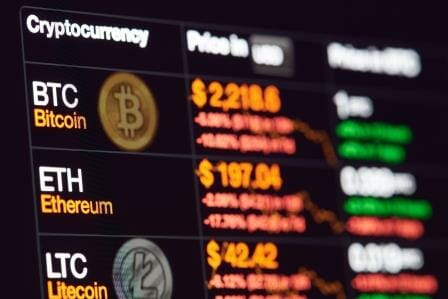The different rates that are handled in the parallel dollar market drive these differences in the price of cryptocurrencies.
Since August 2019, the price of Bitcoin (BTC) and the price of the main cryptocurrencies in Argentina began to experience a lag concerning the value established on international markets.
Some analysts considered that this issue was motivated by the uncertainty among investors, due to the financial difficulties that affect the country or because of the uncertainty regarding a political change.
However, the gap was also present in different exchanges operating in Argentina. In this way, there are important differences between the prices quoted between one platform or another, something that is not common in other countries.
CoinMarketCap platform allowed us to see these differences more clearly. On February 15th, the price of Bitcoin was about USD 10,241 per BTC. At the official exchange rate, this would represent about 628,557 Argentine pesos.
But LocalBitcoins in Argentina offered at the same time reflected values for the purchase for an average of 828,500 Argentine pesos, equivalent to about USD 13,948, that is, about 3,707 dollars more than the value reflected in international markets.
The Reasons
To understand the situation a little more, it is necessary to remember that at the end of 2019, the new President of Argentina, Alberto Fernández, dictated that for some of the dollar purchases citizens had to pay 30% of the amount. This, because the US dollar is the most used currency in the country after the official currency, the Argentine peso.
These provisions generated a “gap” to access to the US dollar. For this reason, the Argentine government indicates through government channels an official price for each dollar, whilst the parallel market (known as Blue) is becoming more popular among citizens, with a rate per dollar that exceeds by almost 25% the price established by The Central Bank.
Therefore, in the main exchange platforms that operate in Argentina, as well as in peer-to-peer (P2P) services such as LocalBitcoins, buyers and sellers establish BTC prices and commercial orders.
In this way, they set the price of Bitcoin in Argentine pesos according to the Blue dollar rate. For this reason, so much higher values are established and they vary according to the different existing indices, as happened in Venezuela.
For instance, this weekend the Buda.com exchange set the price of Bitcoin at 876,499 Argentine pesos (USD 14,280 at the official exchange rate).
Meanwhile, the Ripio platform quoted the price of each BTC at 878,110 Argentine pesos (USD 14,306 as the official exchange rate). This represents about 1,611 Argentine pesos more between one exchange and another.
Finally, CryptoMKT sets the price of each Bitcoin at 868,000 Argentine pesos (USD 14,142 at the official exchange rate). This is about 8,499 Argentine pesos less than the price calculated by Buda.
All of this makes difficult for some users to predict the prices and to know which one is the correct one. Citizens interested in buying cryptocurrencies or dollars look for the best price for them, as well as sellers look for an expensive price to obtain more money.
“I think that, compared with the rest of the world, the difference will continue to be between 2 and 3 %. The only thing that moves it is the informal dollar price”, Germán Guismondi, representative of Paxful in Argentina, considered.
About the price of Bitcoin in the world, it is expected that after the halving of May 12th the price will increase.
“I am convinced that, in the medium and long term, Bitcoin will continue to increase its value. The market matured a lot. I don’t think we will have 2018 again”, the CMO of SharpShark added.
The truth is that everything has a relationship and, whilst there are a parallel market and distortion in the price of dollars, the same will happen with cryptocurrencies prices.
However, dollars and crypto assets have been an alternative to save money in countries like Argentina and Venezuela, which faces a strong economic crisis. Users turn to these digital currencies to avoid the loss of value of their local currencies. This is something that helps further adoption of digital assets and that would boost the adoption of the technology base of these operations: blockchain.
By María Rodríguez











